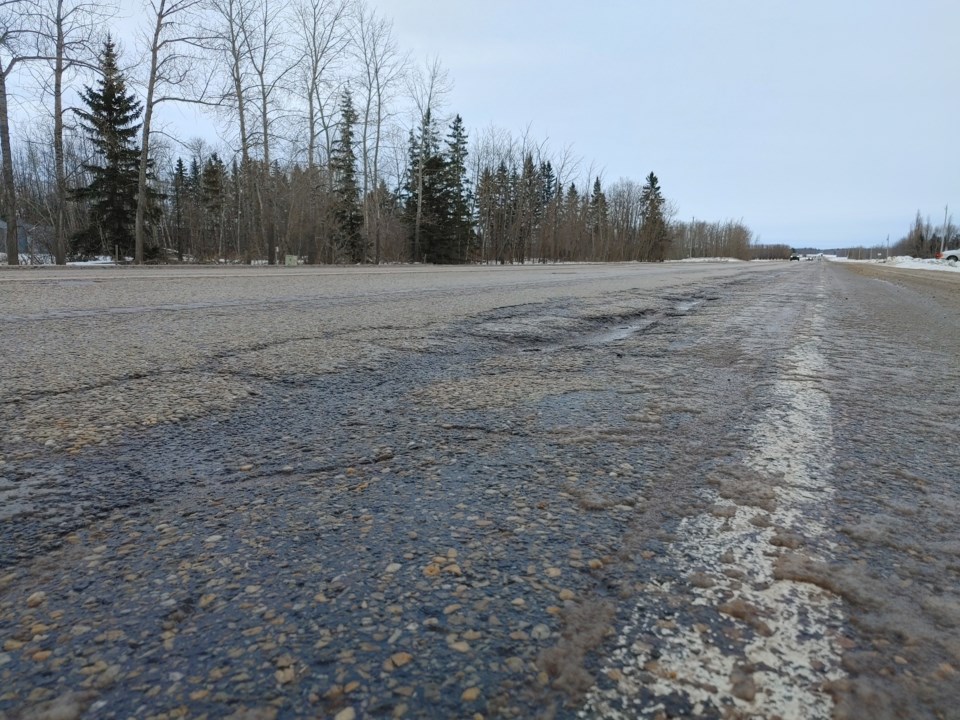Leaders of local governments are worried the new funding model for municipal infrastructure projects fails to capture the burden of infrastructure costs in rural areas and will actually reduce funding for some communities.
The Local Government Fiscal Framework will replace the province's Municipal Sustainability Initiative program starting in 2024. The new model will tie funding to provincial revenue increases from three years prior and calculate eligible funding using a formula based on population and capital assets.
The province said that the LGFF will make funding predictable and give local governments clarity about the amount they will receive each year. But within the new framework there is no recognition of the needs of high growth communities, said Airdrie Mayor Peter Brown.
"When you look at the demand for education, health care, recreation, policing, fire, municipal infrastructure, water and sewer, it doesn't scratch the surface," Brown said.
"We've moved into a new era of massive inflation and you see a formula that comes out that is less than what we had before. It just doesn't make any sense. And it's really challenging."
Brown said the City of Airdrie hasn't yet calculated the final amount they will receive, "but it's going to be significant, in the millions of dollars less than what we would have normally had under the old formula."
In Alberta's charter cities, Edmonton and Calgary, LGFF funding is calculated based on population (48 per cent), education tax requisitions (48 per cent) and local roads (4 per cent). For all other municipalities, the formula is weighted by population (65 per cent), tangible capital assets (15 per cent), amortization of capital assets (10 per cent), and kilometres of local roads (10 per cent).
Under the LGFF, taxpayers in expanding municipalities like Airdrie, Cochrane, and St. Albert won't get the same return on what they pay as those in Edmonton and Calgary, Brown said.
"It's really quite frustrating, and quite frankly disheartening. Because we need help. And we're doing everything we can to reflect the provinces drive to bring people to Alberta (through) the Alberta is Calling campaign. Well, they have to live somewhere. And they need to have a life. And it's municipalities that are providing that," Brown said.
"So where's the recognition for those municipalities that are firing on all cylinders and doing everything we can to accommodate that growth?"
The Government of Alberta has assured municipalities that they will not receive less in the 2024-25 fiscal year than they would have under the past funding arrangement. One-time top-up funding will be available in the first year of LGFF to ensure no local government experiences a year-over-year decrease from 2023's capital funding allocation, according to Municipal Affairs.
With capital funding indexed to increases in provincial revenue, funding for municipalities will increase by 14 per cent in 2025 to $820 million from $722 million.
$30 billion infrastructure deficit
While the commitment to increase funding in accord with revenue is a great start, it does not cover the infrastructure deficit seen across Alberta, said Tyler Gandam, president of Alberta Municipalities (ABmunis), which represents over 260 communities throughout the province.
If you add up the costs for needed upgrades or replacements of roads, sidewalks, bridges, fire halls, and everything else a municipality is mandated to look after, Alberta is facing a $30 billion infrastructure deficit, Gandam said. ABmunis has been calling for a $1 billion dollar increase in infrastructure funding for the last nine months to help deal with this deficit.
"The amount of funding that has been cut over the last 10 years is substantial. The billion dollars that we asked for in addition to the base funding doesn't even cover what we've been cut in the last 10 years. So we're at a disadvantage right from the very start," Gandam said.
Provincial funding for infrastructure has dropped from about $420 per person in 2011 to about $150 per person today, according to ABmunis.
"The continuous cuts to that infrastructure funding is why property taxes are going up, to look after the infrastructure in the communities, or why you're seeing more of that failing infrastructure in your community. Because we just aren't being funded like we were from the province 10 years ago," Gandam said.
Without a substantial increase in the base funding for infrastructure provided by the province, "we're not going to have anybody being able to do the work they need to do."
Formula for diverse municipalities almost impossible
The framework put forward by Municipal Affairs is well intentioned and for the most part will distribute funding fairly in the next fiscal year, but developing a formula for a program supporting Alberta's diverse municipalities is almost impossible, Paul McLauchlin, president of the Rural Municipalities of Alberta, said in an email.
There are positive aspects of the new program that reflect RMA's input, such as funding to maintain existing infrastructure, but overall "we are disappointed with the funding formula chosen," McLauchlin said.
"Unfortunately, the weighting of population at 65 per cent within the formula really doesn’t reflect the factors that drive capital costs for rural municipalities. RMA members manage over 75 per cent of roads and 60 per cent of bridges in the province, and many of those exist to support industrial and resource development, not residences. So even though they may not be captured in a per capita metric, they are crucial to the province’s growth and a huge expense for rural municipalities."
The RMA initially proposed a formula with stronger emphasis on metrics that track actual assets a municipality is responsible for building and maintaining, and less weight given to population.
"With population weighing so heavily in the formula, it stands to reason that as the population gap between large urban centres and everywhere else continues to grow, so too will the funding gulf," McLauchlin said.
Small towns and villages in the province with limited or no growth "may have some very difficult decisions to make as a result of reduced LGFF funding," McLauchlin said.



